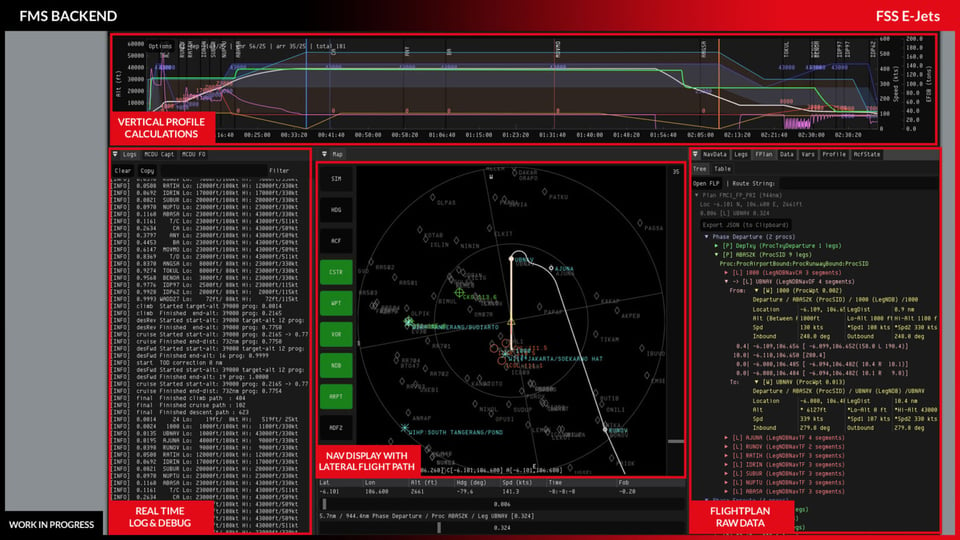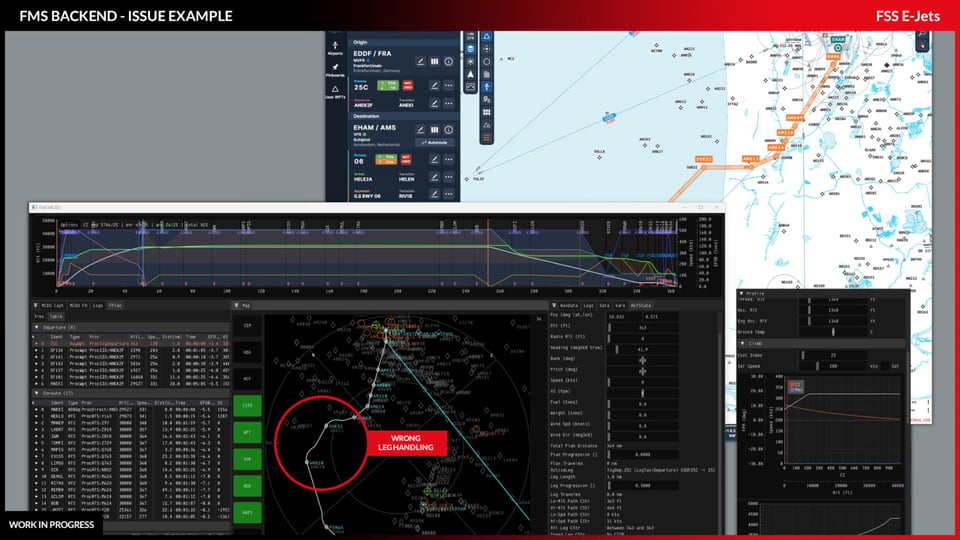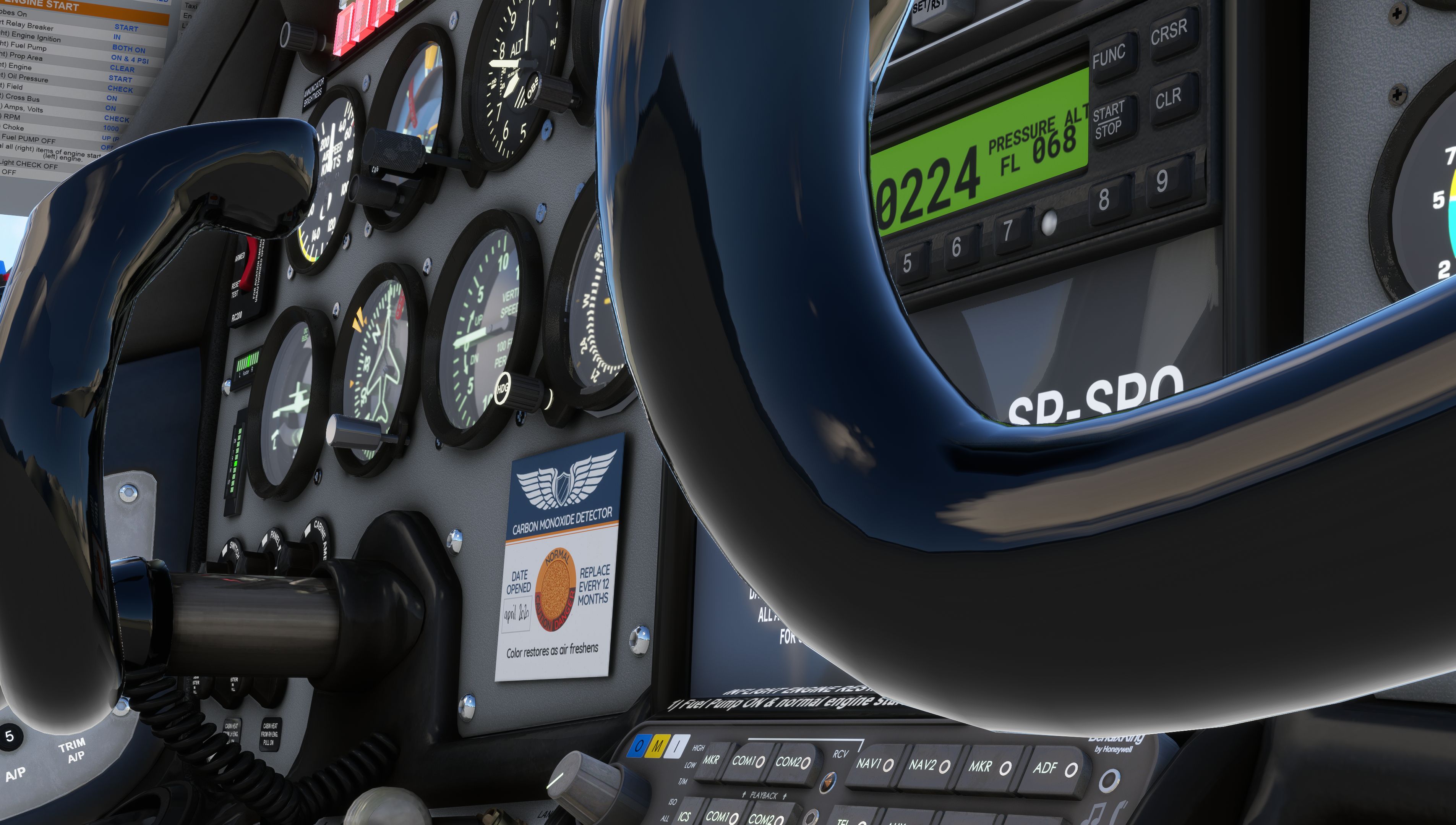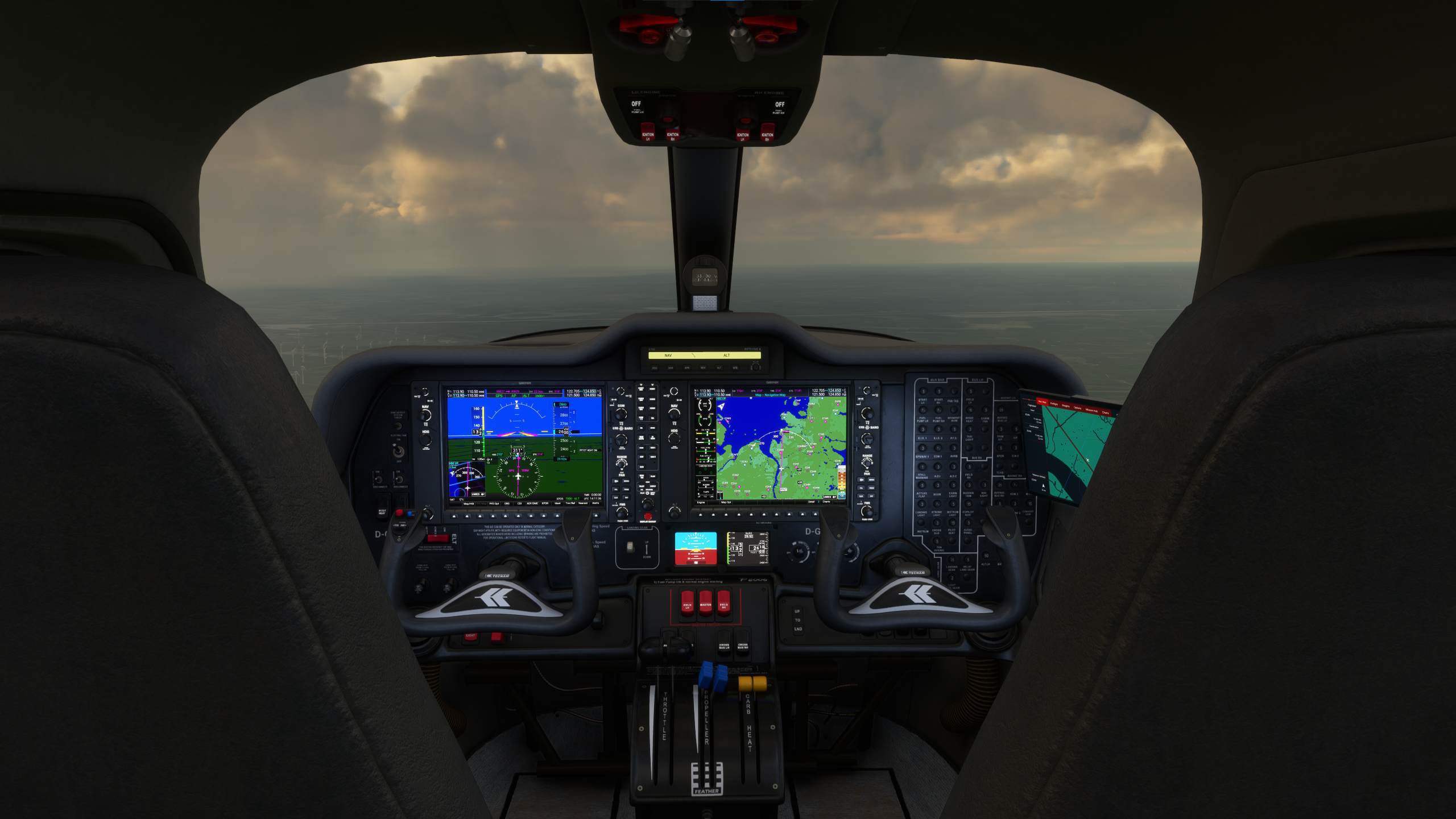The year is now almost over and we have around 24 months of development behind us in the E-Jets project. The first half before the first release, the second half in Early Access. We are aware that you are waiting impatiently for our custom FMS, which will offer new LNAV and VNAV functionalities. Today we want to give you an insight into the current state of development.
But before we do that, we first need to take a look at the past. Namely to our originally planned roadmap, created before the first release in 2022.
We planned a first early access release at Christmas 2022 with a low price. That became reality (albeit with a slight delay). Next, by summer 2023, many more features should have been added and the E190/195 released as a separate product so that an initial price increase (for new customers only, of course) would be justified. At Christmas 2023, around 12 months after the first release and 6 months after the first price increase, the specially developed FMS including autopilot was to be released, which would have brought the aircraft to version 1.0. This was then to be accompanied by another price increase and be considered the final version.

That was the plan at the time. It turned out to be different. For the first 6 months after the release, we were intensively busy with bug fixing and basically didn’t get to the E190/195 at all. However, new features were continuously added and the aircraft improved rapidly. During this time, the team also grew, new people had to be trained, structures had to be reorganized and new concepts had to be devised. In short, it was foreseeable that our goals could not be achieved within the planned timeframe. For this reason, we decided not to raise the price for the time being, even though the systems (apart from the FMS) have become much better and many thousands of hours have been invested in development. After all, despite many controversial discussions on the net, the add-on was and is commercially successful enough to be offered at the lower price to this day and even beyond.
If we look at the current state, we are just before the release of the E190/195 and are therefore a good 6 months behind our actual schedule. In this respect, we can confidently draw up a new roadmap that is definitely more realistic than the previous one, although it still cannot be set in stone. Our current plan is to release a first version of our custom FMS and autopilot in summer 2024. First version because it will certainly still contain a number of bugs and will not yet have the full feature set. Based on the experience we have gained, it is better to plan another 6 months for this, resulting in a version 1.0 by the end of 2024. Of course, a lot can still happen along the way, but if we take a look behind the scenes, we can be cautiously optimistic.

The development of our own FMS with all its facets, but primarily lateral and vertical navigation (LNAV/VNAV), is an incredibly extensive undertaking. We were aware of this beforehand, but without a good dose of optimism we would probably never have dared to tackle it. After all, our developers are extremely experienced and skilled coders. But the bottom line is that this is not enough; it takes an incredible amount of time to familiarize yourself with the systems. You could spend hours talking about how complex and interwoven all the systems are. And the problem is: what use is a super good FMS that plans the entire flight plan from start to finish, but the aircraft doesn’t know how to fly it? Because we can’t teach the MSFS autopilot that. So the autopilot also has to be developed completely in-house, which quickly doubles the overall effort. Rapid progress is also made blocked by the fact that it is difficult for multiple developers to work on the FMS at the same time due to the complexity of the systems. Our current staffing looks like this: One full-time developer on the FMS backend and one full-time developer on the autopilot.
We have decided on the following approach for the FMS: We initially code the entire system outside the flight simulator. This allows us to work faster and more efficiently, even though we have an interface to the simulator so that we can read out data from the aircraft and the environment in real time. As soon as the whole system is in place and bugs have been fixed, we can integrate it directly into the aircraft, connecting the autopilot and implementing the nav display with the new route drawing. But we are still some way from that. In the following picture you can see our current backend application. We can use it to generate or import any route, update navigation data, etc. The upper part shows the vertical profiles including altitude constrains, performance limits, speed curves and much more. In the middle you can see the lateral flight path. Explaining the gibberish left and right would go too far at this point.

As you can see, we could theoretically already build a nav display from the whole thing and feed the data into the existing MCDU. But here’s an example of why we’re not doing it yet:

Do you see the curved lines in the lateral flight path just after the waypoints? This is due to incorrect waypoint type handling. It’s just one example, but we could list hundreds of them. And honestly, if we’re going to put so much effort into a new system, let’s fix as much as possible before we put it into the actual airplane. Otherwise we’ll end up with patches and hot fixes that nobody really wants. We understand that you want a new FMS as soon as possible, but you also want it to work properly. And that’s why we all have to be patient. Nobody wants success more than we do and that’s why we’re working on this every single day. Of course, it is unsatisfactory if we only work behind closed doors – at least as far as the FMS and the autopilot are concerned. That’s why this post was so important to us. As you can see, we’re working on it and perhaps we’ll be able to show you new screenshots early next year that you can compare with the ones we have today.
If the previous explanations were not detailed enough, you should take a look at the following illustration. It shows the individual sub-systems that we have to create as part of the final version 1.0.

1. Mathematical functions and algorithms used specifically for the calculations and analyses of navigational task
2. Hook to MSFS nav station data via SimConnect
3. Integration of Navigraph Navdata AIRACs
4. A system for encoding geographical coordinates
5. Emulator for MSFS data
6. Map tile management for efficient loading
7. Logical drawing system for gauges
8. Hook to MSFS SimObject data via SimConnect
9. Integration of default MSFS nav data as fallback
10. Hook to the default MSFS flightplan system
11. Integration of SimBrief data like route, weights etc.
12. Cache system for map tiles on our server for custom map drawings in EFB or ND
13. Integration of 3rd party map providers like OSM or MapBox
14. System to draw SVG files on gauges
15. A custom TCAS system
16. Real time aircraft data like speed, altitude etc.
17. Waypoint flow management system
18. Data handler for magneic variation
19. Managing nav data such as ILS, VORs etc. on our own
20. Aircraft performance data such as climb rates, target speeds etc.
21. Own map data server providing fully custom maps
22. Integration of weather data (3rd party or own service)
23. Handling of a flight plan in MCDU
24. Fuel calculation based on performance data
25. Center of gravity calculation based on performance data
26. Service to render customizable maps
27. Custom coded lateral autopilot modes
28. Vertical profile calculation module
29. Migrating the already existing autothrottle module into the new environment
30. A custom EGPWS system
31. Render service to draw routes on gauges
32.Custom coded vertical autopilot modes
33. WASM coded Vertical Situation Display on MFD
34. A custom moving map in EFB
35. A custom moving map for an Inflight Entertainment System in the cabin
36. WASM coded HSI on PFD
37. WASM coded Map and Plan page on MFD
38. WASM coded MCDU
39. Full WASM migration of all pages on MFD
40. WASM coded IESS
41. Full WASM migration of all PFD data
To make sure you believe us, we have created a short video where you can see our moving map in combination with the simulator.
We hope that this post has given you a sufficient insight into our work.
To all our supporters: Thank you so much for your patience, your input and your enthusiasm to continuously improve E-Jets. Without you we would be on a completely different level today and we are proud that our „community“ approach aka Early Access is a complete success in that respect.
To all of you who have not yet joined our enthusiastic community: Maybe do it with the upcoming E190/195 or just wait leisurely until the airplane has reached your desired level. We recommend that you join our Discord server to receive regular updates.
Have a happy holiday season and an E-Jet rich year 2024!




